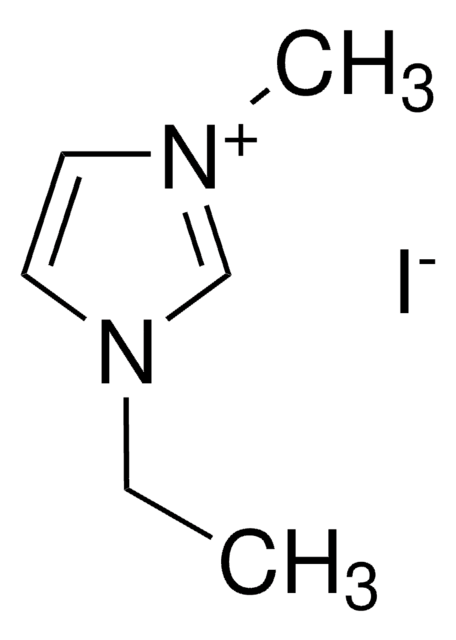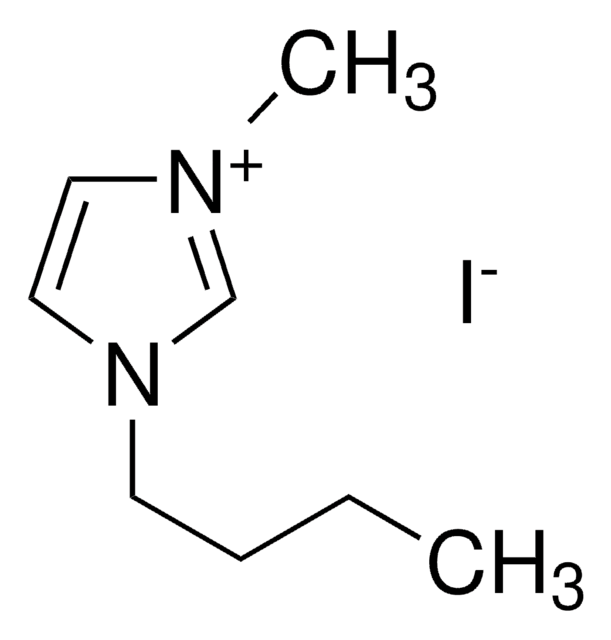추천 제품
설명
Crystal Structure: > 99% anatase (analysis carried out on starting material, prior to paste manufacture)
Quality Level
양식
paste (cream)
농도
27.0 wt. %
평균 부품 크기
20 nm (active)
≤450 nm (scatter)
점도
40000-55000 mPa.s(20 °C) (Analysis carried out with 20mm 4 degree cone/plate; 40 s-1))
InChI
1S/2O.Ti
InChI key
GWEVSGVZZGPLCZ-UHFFFAOYSA-N
일반 설명
애플리케이션
The dispersed scattering particles in Active Opaque Titania Paste formulation lead to enhanced DSC performance through the large surface/volume ratio of the sintered film.
Active Opaque Titania Paste has a blend of active anatase particles (~20nm) and larger anatase scatter particles (up to 450nm).
After drying; this paste must be fired at or above 500°C. This results in an opaque sintered layer with film thickness of 7-8μm for one printed layer and ~15μm for two layers; when using a 48T mesh.
This paste exhibits optimal rheological properties that provide good surface uniformity and contain organic binders specially formulated to provide versatile porosity suitable for a range of dye/electrolyte systems.
Storage: Store in the dark at 20°C
법적 정보
Greatcell Solar® is a registered trademark of Greatcell Solar
신호어
Warning
유해 및 위험 성명서
Hazard Classifications
Eye Irrit. 2 - Skin Irrit. 2
Storage Class Code
10 - Combustible liquids
WGK
WGK 1
Flash Point (°F)
195.8 °F
Flash Point (°C)
91 °C
이미 열람한 고객
문서
Professor Shinar (Iowa State University, USA) summarizes the developments of a variety of sensor configurations based on organic and hybrid electronics, as low-cost, disposable, non-invasive, wearable bioelectronics for healthcare.
Dye-sensitized solar cells (DSCs) are 3rd generation solar cells combining the promise of high efficiency with low production costs.
Organic photovoltaics (OPVs) represent a low-cost, lightweight, and scalable alternative to conventional solar cells. While significant progress has been made in the development of conventional bulk heterojunction cells, new approaches are required to achieve the performance and stability necessary to enable commercially successful OPVs.
While dye sensitization as the basis for color photography has been accepted for a very long time,1 attempts to use this principle for the conversion of solar light to electricity generally had resulted only in very low photocurrents, below 100 nA/cm2.2
자사의 과학자팀은 생명 과학, 재료 과학, 화학 합성, 크로마토그래피, 분석 및 기타 많은 영역을 포함한 모든 과학 분야에 경험이 있습니다..
고객지원팀으로 연락바랍니다.





![Spiro[9H-fluorene-9,9′-[9H]xanthene]-2,2′,7,7′-tetramine](/deepweb/assets/sigmaaldrich/product/structures/225/593/3b5858b3-0993-43eb-97ee-3f0d2a1142dc/640/3b5858b3-0993-43eb-97ee-3f0d2a1142dc.png)
